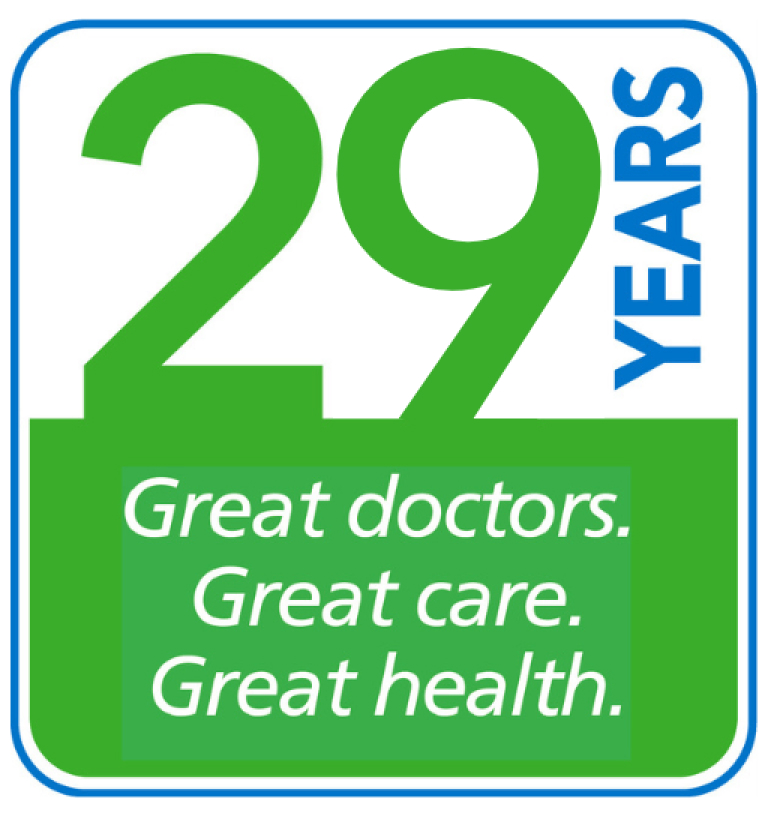Category Archives: Preventative Care
2021 Allergy Forecast: A Bad Year for Everyone?
BY: MICHAEL VOLKER, CRNP
Like taxes, allergy season is one of those things you just can’t avoid. In fact, due to climate change, it may be getting worse. Warmer temperatures lead to more pollen production, so 2021 may be the most intense allergy season yet. And due to COVID-19 quarantine, children may especially have a rough year.
When is allergy season?
It starts in the spring and continues until the fall, but different allergens, the substances that trigger allergies, appear at different times.
March and April: As spring begins, tree pollen is the top allergen, followed by weeds and grasses. In some parts of Maryland, it’s not unusual to see cars covered by the itchy stuff.
May to July: In May, all the trees, grass and weeds gang up to pump out allergens, making it a bad time for allergy sufferers. This is the start of peak allergy season, which continues until July.
July to September: Enter ragweed, a common flowering plant. Ragweed is the leading cause of seasonal allergies, with 75% of all sufferers allergic to it.
October: With temperatures falling and plants starting to go dormant, the air starts to clear, bringing an end to outdoor allergy season. Now it’s possible to breathe a sigh of relief without coughing.
See the Interactive Allergy Forecaster for allergy conditions where you live.
COVID-19 and children’s allergies
Many children have been quarantined for the past year, with limited time outdoors. Now that they’re starting to return to their regular routines, you may notice they’re sneezing, coughing and rubbing their eyes more than they have in past allergy seasons. This may be because spending a year indoors has made them more sensitive to allergies.
Children need some exposure to allergens for their immune systems to learn how to fight them. Since many kids have had limited exposure to outdoor allergens for a year, they may have stronger allergic reactions than they had in the past.
Surviving allergy season
The best thing for both adults and children to do is minimize your exposure to allergens. Try not to go outside when the pollen count is high. Use the Interactive Allergy Forecaster to see what allergy conditions are in your area and get forecasts for tree, grass and ragweed pollen. Other things to try:
- If you have pets, keep them in the house on high-pollen days. Pollen may stick to their fur and end up in your nose.
- Change your AC filters regularly and consider getting a HEPA air filter to strain allergens out of the air in your home.
- Use over-the-counter allergy medicines to relieve symptoms: antihistamines to relieve your itchy nose and sneezing, and decongestants to get rid of your stuffy nose.
- On high pollen days, change your clothes when coming in from outside.
- Keep windows and doors closed to reduce pollen entering the house.
If your or your child’s allergy symptoms are severe or continue a long time, your health care provider may be able to help or refer you to an allergist.
 Michael Volker, Certified Registered Nurse Practitioner, received his Master of Science in Nursing degree from Walden University and is certified by the American Academy of Nurse Practitioners. He sees patients in the Arundel Mills office.
Michael Volker, Certified Registered Nurse Practitioner, received his Master of Science in Nursing degree from Walden University and is certified by the American Academy of Nurse Practitioners. He sees patients in the Arundel Mills office.
HPV, the First Cancer Vaccine
By: Jamie Harms, M.D.
In 2006, the first vaccine to help prevent a cancer was released in the United States: the HPV vaccine.
Cervical cancer was one of the most common cancers among women in the U.S. until Pap smears became routine and helped identify pre-cancerous and early cancerous cervical cells. Cervical cancer is almost always caused by a virus, the human papilloma virus.
HPV is common
The human papilloma virus (HPV) is also the cause of anal and genital warts, as well as vaginal, anal, penile and oral cancers. It is spread by skin-to-skin contact, including sexual contact as well as oral sex and hand-to-genital contact.
HPV is common. It is estimated that 75-80% of sexually active adults will become infected with at least one strain of HPV by the age of 50. There are over 100 strains of HPV, and while most of them are not harmful, about 15 are known to cause cervical cancer. Most times, HPV infection goes away on its own, but in 10-20% of women, the HPV infection does not go away. These women are at risk of developing cervical cancer.
The HPV vaccine
In 2006, a vaccine against HPV was released in the U.S. The vaccine is recommended for both girls and boys at 11-12 years of age. It is given in a series of two vaccines, 6 months apart. Teens and young adults can get this vaccine later but will need three vaccines if it is given after age 15 because the vaccine is much more effective in younger teens.
Proven safe and effective
Here’s the best news… this vaccine is making a difference in our health. In girls 13-19 years of age, HPV infections have dropped by 83%. The number of women 20-24 years of age infected by HPV has dropped by 66%. That’s HUGE! The frequency of genital warts in girls and boys has dropped, too — girls by 67% and boys by 48%. The number of precancerous findings in girls has dropped by 51%.
So, this vaccine is working, and working well. Since the vaccine was released, there have been no reports of major side effects. The most common side effects are soreness and redness at the injection site, headaches and nausea. Some parents have worried that giving their child this vaccine will result in decreased fertility or will encourage them to have sex earlier or more often, but studies show that this is not true.
MPCP recommends that your child receive the HPV vaccine with their other required vaccines at 11-12 years of age. Talk with your doctor or look at these good sources for more information:
Do ‘Natural’ Sunscreens Really Work?
By: Destiny Ingram, CRNP
Sun exposure increases our risk of Melanoma cancer, a serious skin cancer linked to death in the United States. This makes questions arise on the best ways to protect ourselves from the sun’s harmful rays. Many people like to use “natural” products, so stores now sell sunscreens containing “natural” ingredients that claim to be just as effective as chemical-based sunscreens. Is that true, or are you risking your money – and your skin – by using natural sunscreens?
Chemical sunscreens work by absorbing the sun’s rays. Their active ingredients (the ones that protect you from harmful UVA and UVB rays) are synthetic, such as avobenzone, ecamsule, homosalate, octisalate, octocrylene, octyl methoxycinnamate, octyl salicylate, and oxybenzone.
By contrast, natural sunscreen are mineral-based products that usually contain titanium dioxide, zinc oxide, or both, as active ingredients. Those minerals work by deflecting the sun’s UV rays.
Consumer Reports, a national product-testing organization, compared chemical and natural sunscreens for effectiveness over a four-year period. They found that chemical sunscreens consistently score better than their natural competitors. Chemical sunscreens provide superior UVA and UVB protection, and are more likely to deliver the SPF (sun protection factor) promised on their label than natural products.
Their conclusion: natural sunscreen provide some protection but are less effective than chemical sunscreens, so users may be getting more UV damage than they think.
Questions about chemicals
Some people opt for natural sunscreens because they’ve heard that the chemicals in sunscreens may be dangerous. There has been a lot of research showing the active in ingredients in BOTH natural and chemical sunscreens are absorbed into the body and present cancer and neurotoxic risks when used in large amounts, but the FDA currently approves the ingredients in chemical sunscreens as safe and effective. Besides, health professionals agree that getting skin cancer is a much greater risk. Those concerned would benefit greatly from broad-rimmed hats and new, cooling SPF labeled clothing that are hitting many outdoor stores.
How to use sunscreen effectively
Follow these tips from the American Academy of Dermatology to get maximum protection from your sunscreen:
- Look for products labeled “broad spectrum,” which means they protect the skin from both UVA and UVB rays
- Choose a sunscreen with an SPF (sun protection factor) of 30-50
- Apply sunscreen 15 minutes before going outdoors
- To protect your lips, apply a lip balm or lipstick that contains sunscreen
- When outdoors, reapply sunscreen about every two hours, or after swimming or sweating, according to the directions on the bottle.
- When possible, wear broad-rimmed hats, light weight and loose long sleeves and pants to keep skin covered.
 Destiny Ingram, Certified Registered Nurse Practitioner, received her Master of Science in Nursing from Frontier Nursing University. She sees patients in MPCP’s Glen Burnie office.
Destiny Ingram, Certified Registered Nurse Practitioner, received her Master of Science in Nursing from Frontier Nursing University. She sees patients in MPCP’s Glen Burnie office.
Tick Bite FAQs
By Jamie Harms, M.D.
Warmer weather is here, and with it, ticks are back. Here are some frequently asked questions about ticks and tick bites.
What should I do if I am bitten by a tick?
Use tweezers to grasp the tick as close to your skin as possible, then pull the tick off with steady pressure. Then wash your hands and the area of the bite with soap and water. Sometimes, the mouthparts of the tick will break off and stay in the skin. If you can remove them easily, use the tweezers to pull them out. If you can’t remove them easily, just let the skin heal. Your body will break down the remaining mouthparts over time.
What kind of tick bit me?
Lyme disease is carried by the deer tick, also known as the blacklegged tick. It is not carried by dog ticks, so you should try to identify the type of tick that bit you. The CDC has excellent illustrations of the ticks found in Maryland. The ticks that are out in the spring are nymphs. They are very small, about the size of a poppy seed.
What is my risk of getting Lyme disease from a tick bite?
Ticks need to be attached at least 36 hours to transmit Lyme disease. If you pull off a tick which is crawling on your skin or which is not engorged with blood, you will not get Lyme disease.
Should I take an antibiotic after a tick bite to prevent Lyme disease?
Researchers still don’t have a clear answer about this. There have been some small studies suggesting that a single dose of doxycycline may reduce your risk of getting Lyme disease after a tick bite, but only under these conditions:
- You are not allergic to doxycycline. No other antibiotics have been studied for preventing Lyme disease. Children must be at least 8 years old to take doxycycline. Pregnant women should not take doxycycline.
- The tick can be identified as a deer tick.
- The tick has been attached for more than 36 hours based on the time of exposure or the observation that the tick is engorged with blood.
- You can take the dose of doxycycline within 72 hours of removing the tick.
Experts do not recommend that people take antibiotics to try to prevent other tick-borne diseases, such as anaplasmosis, babesiosis, ehrlichosis or Rocky Mountain Spotted fever.
Do I have Lyme disease?
Most people with Lyme disease will get a rash around the site of the tick bite one to four weeks after the bite. The rash is often described as “bullseye” rash, because it is often red on the outside and clear on the inside. Lyme disease rashes can also come in other patterns, though. A Lyme disease rash gets bigger each day, and it usually over two inches wide. Check out these photos from the researchers at Johns Hopkins Hospital.
When should I see my doctor?
If you were bitten by a tick and have an expanding red rash around the bite or have “summer flu” symptoms, you should see your primary care provider.



